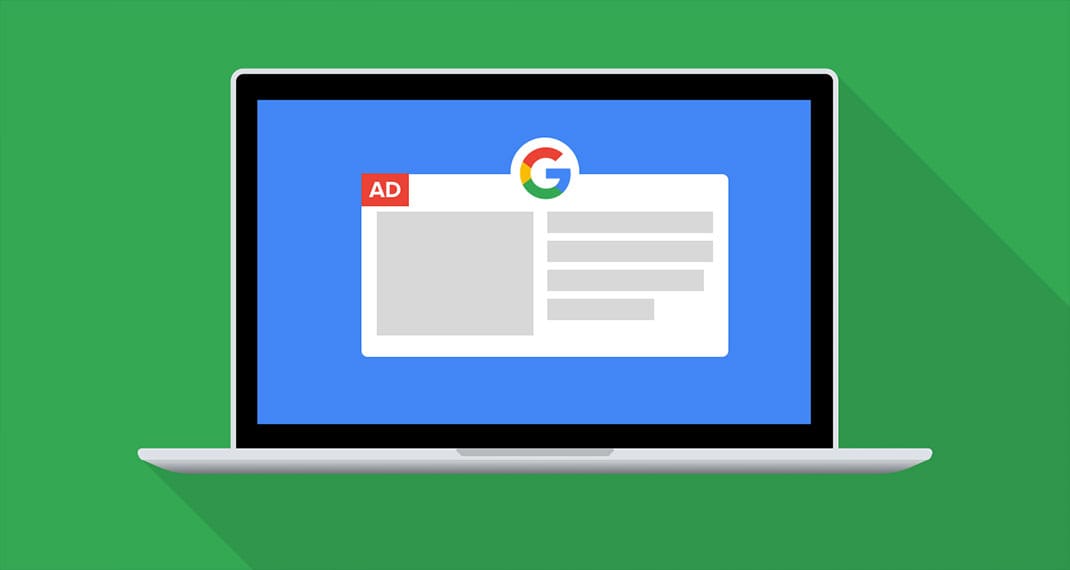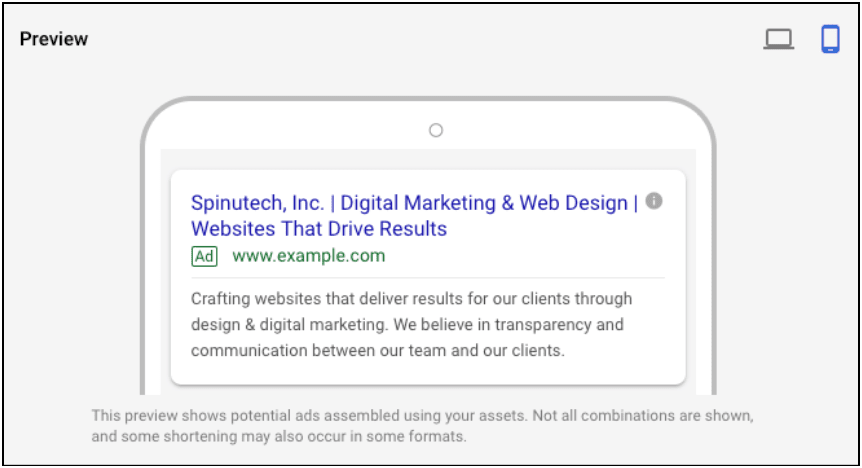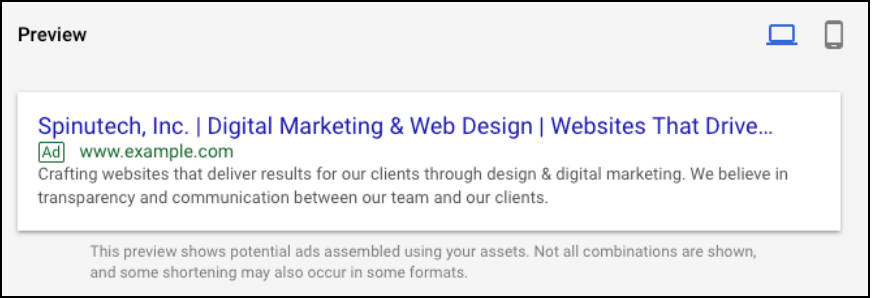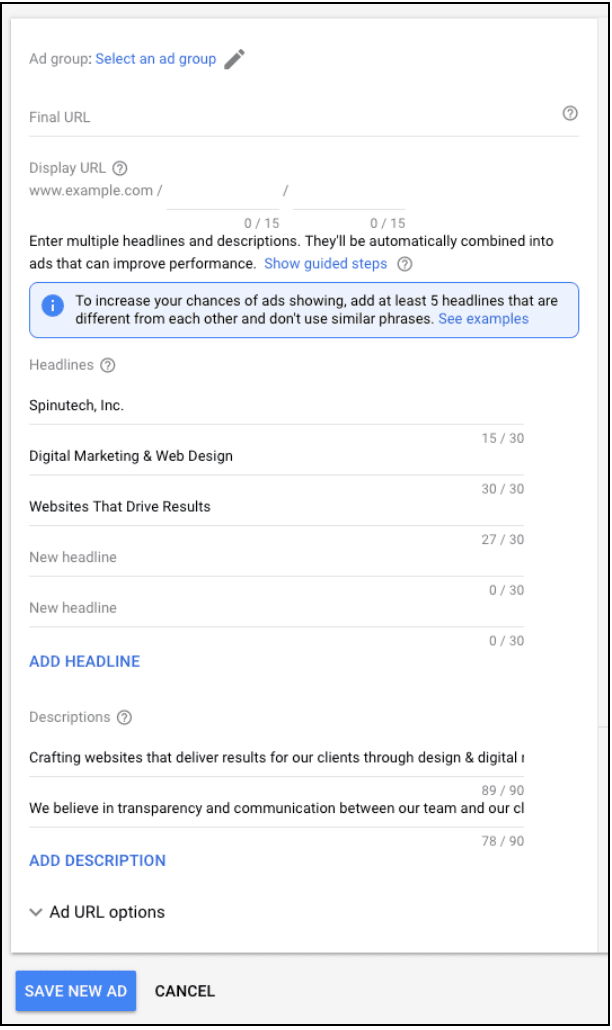Here's What You Need To Know about Responsive Search Ads
Published by Spinutech on July 17, 2018

Not known for resting on their laurels, Google is once again testing a new search ad format. As before, this new format appropriates even more ad real estate. However, its primary purpose is to take the next step towards integrating machine learning more deeply with ad creative and testing.
The new format (which is still in beta), called a Responsive Search Ad, is intended as a way to “create an ad that automatically adapts to show relevant messages to your customers” according to Google’s own AdWords UI description.
So What Exactly is Google Offering with this Newest Format?
Notable Features of Responsive Search Ads
- Show up to three headlines instead of two
- A potential 50 percent increase
- Show up to two 90-character descriptions instead of just one 80-character description
- A potential 12 to 125 percent increase over expanded search ads


In and of itself, this is no doubt a welcome set of changes for most digital marketers. Certainly, any opportunity to command more ad space will almost always be warmly embraced. However, in this case, that’s really more the icing on the cake, as it were, of this newest ad format. Where these ads really seek to differentiate themselves is behind the scenes, where digital marketers (often) spend a chunk of their time: Ad testing and optimizing.
Any paid search specialist (worth their salt) will tell you that ad testing is a crucial part of the process when it comes to improving the performance of AdWords accounts. Sure, we (or the client) may think we know what the end-user is looking for, how to catch their attention, what call to action is going to compel the largest percentage of them to convert, and so on and so forth. The truth, however, is that as often as not, we’re only partly right (or straight-up wrong).
Given that most paid search specialists would much rather chew on data than spend time trying to come up with compelling ad copy, those same specialists are also likely to tell you that while they know it’s important, ad testing is one of the less enjoyable aspects of their job. This is where Responsive Search Ads aim to make a digital marketer’s life a little bit easier. The primary tools this new format offers for accomplishing this are as follows:
Headlines (So Many Headlines), Descriptions, and ‘Pinning’
Headlines – Up to 15 options
Descriptions – Up to four options
‘Pinning’ – This gives the advertiser the ability to ‘pin’ headlines and descriptions to specific positions, a valuable piece of control for those whose ads may require disclaimers or who want to ensure their brand name only shows in the first headline position.

New Opportunities Bring New Challenges
Needless to say, this new format presents a unique set of opportunities and challenges. On the one hand, Google is using AI to manage the more tedious aspects of ad testing: changing only one variable, gathering a statistically significant amount of data, determining a winner, changing something else in the ad, and then repeating it all over again, ad nauseum...oh, and all the while, making sure you properly track ad performance and results as well!
On the other hand, this new format is likely (in most cases) to require a more in-depth consideration of your ad copy and creative messaging before it goes live. Trying to ascertain whether any unintentional (aka: random) combinations of your various headlines and/or descriptions is going to cause your ads to become future digital marketing meme material may cause a few advertisers to lose some sleep. In part because we all know that it never fails that the client will be the first one to see the offending ad despite our best attempts at considering all possible permutations.
Final Thoughts
As with any new feature, there are bound to be some unexpected results, and occasionally even some bugs (yes, even with Google). Still, if you’re fortunate enough to be a part of the beta test for this new format, we encourage you not to shy away from it. Pick a few carefully selected ad groups, clearly define your expectations (e.g. what results will be considered successful or not), and, once the new ads are live, monitor them closely to make sure they’re performing as expected.
PRO TIP: If you’re fortunate enough to be a part of the beta test for this new format, we encourage you not to shy away from it.
Not happy with your current AdWords performance? Prefer to focus on running your business or doing your job, as opposed to staying abreast of the ever-changing world of digital marketing? Let us know, we’d love to help you.